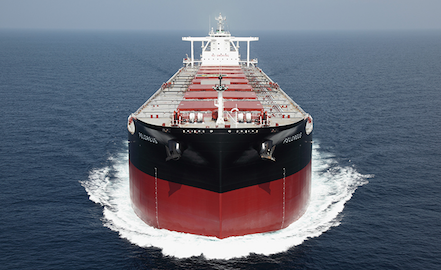Baltic Capesize Index hits record low, closing on just one point

The Baltic Capesize Index hit a record low yesterday, dropping 92 points, or 98.9%, to finish on just one point with the overall Baltic Dry Index also sliding, dropping 27 points to duck under the 500 points mark, closing on 498. The cape index is for non-scrubber fitted ships and has been heading downwards now for 35 consecutive days.
Writing on Twitter, Peter Sand, chief shipping analyst for BIMCO, commented on yesterday’s record cape low: “IMO 2020 takes its toll alongside seasonality and coronavirus.”
With the price differential between the Pacific and Atlantic basins at very high levels, Splash has tracked backhaul cargo – ships respositioning this week from the Pacific to the Atlantic – at minus $11,000 a day.
“Imagine paying someone 11k per day for the privilege to charter your ship,” commented one London-based dry bulk owner.
Iron ore volumes out of Brazil and Australia have been very weak so far this year. Minas Gerais, a major ore producing region in Brazil, reportedly experienced the heaviest 24 hours of rainfall in 110 years.
Over the first four weeks of 2020, brokers Braemar ACM recorded 82 vessels loading iron ore in Brazil, down 41% on the previous four weeks.
Meanwhile in Australia, cargo flows have also been disrupted. A conveyor belt fire at Cape Lambert has temporarily taken some tonnes offline, and two cyclones so far in January have disrupted loading schedules.
Australian iron ore shipments are down over the first four weeks of the year by 26% versus the previous four weeks.
Braemar ACM noted that it is beginning to see more tonnage idling in the Pacific as an alternative to locking in loss-making employment.
Baltic Cape Down to ONE index point for a non-scrubber fitted ship. #IMO2020 takes it toll alongside seasonality and coronavirus. #drybulk @Splash_247 pic.twitter.com/6iA3A9xbpc
— Peter Sand (@XenetaSand) January 30, 2020

Sam, have you been able to identify any data that could shed some light on the impact that the current shipping/cargo prices are having on ship scrappage? With IMO 2020, it would seem that many companies would move to scrap the least efficient portion of their fleets due to the cost of running them being too high (you note in some scenarios companies are actually losing $11k per charter). A month in to the new regulatory environment, are there indications that the scrap rate is increasing?